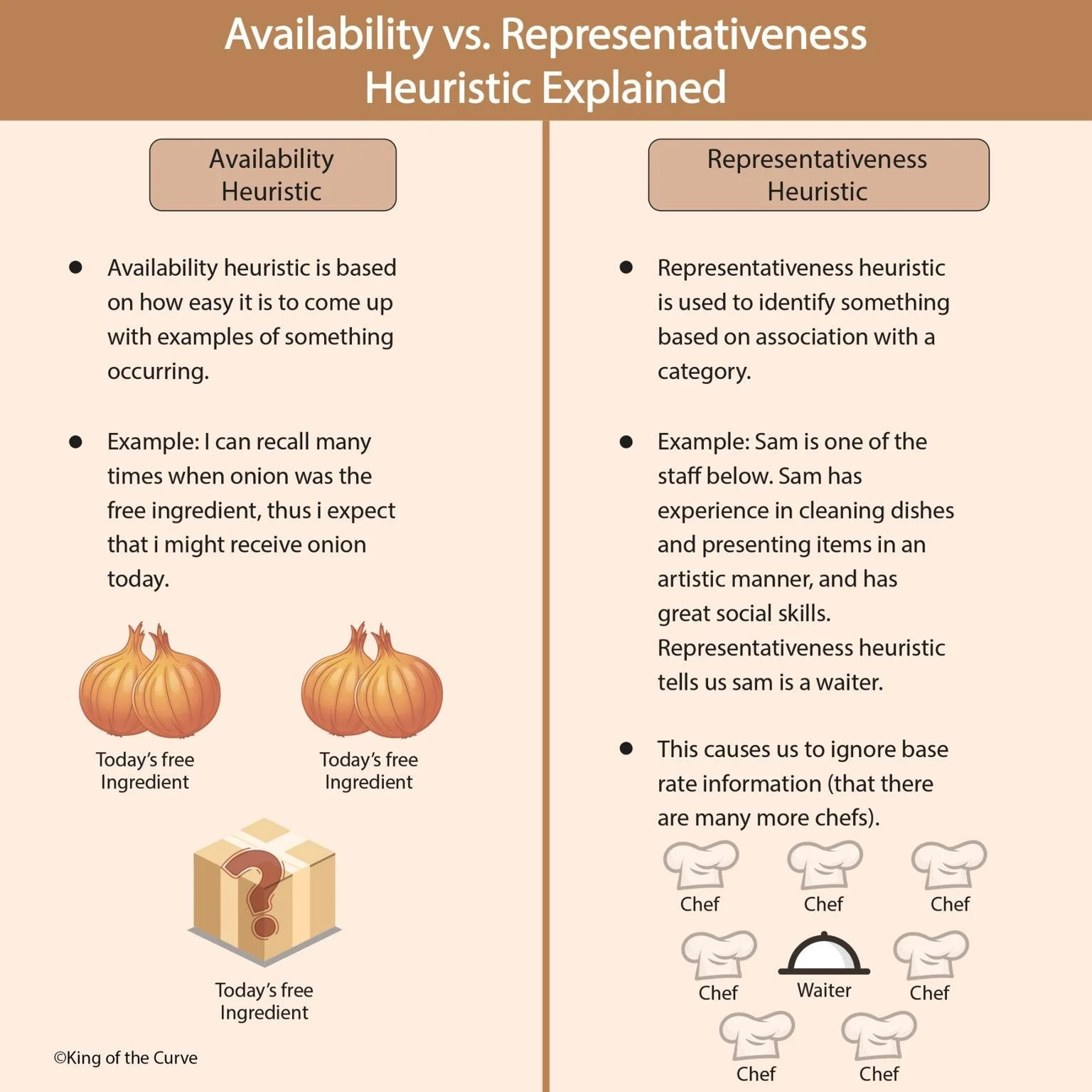🧠 Availability vs. Representativeness Heuristic Explained
When we make decisions or judgments, especially under uncertainty, our brains often rely on mental shortcuts called heuristics. These shortcuts help us make quick assessments without needing to process every detail. Two common types of heuristics are the Availability Heuristic and the Representativeness Heuristic. Let’s break them down.
🧠 What is the Availability Heuristic?
The Availability Heuristic is based on how easily something comes to mind. If an example or event is easy to recall, we tend to believe it is more likely to occur.
🔍 Example:
Imagine a daily scenario where a store gives out a free ingredient. You’ve noticed that onion was frequently the item in the past. Because of this repeated memory, you now expect today’s free ingredient to be onion again—even though there’s no real guarantee.
This type of thinking is driven by ease of recall, not actual probability.
💡 Key Insight:
“Just because it’s easier to remember doesn’t mean it’s more likely.”
🧠 What is the Representativeness Heuristic?
The Representativeness Heuristic is used when we judge something based on how closely it matches a certain category or stereotype—even if it contradicts statistical reality.
🔍 Example:
Let’s say you’re told about Sam, who has:
Experience cleaning dishes
A knack for artistic presentation
Great social skills
You're then shown a group of restaurant staff: one waiter and many chefs.
Despite knowing that there are more chefs, you might still assume Sam is the waiter—because Sam fits your mental model (or stereotype) of what a waiter is like. This ignores base rate information (i.e., the fact that statistically, Sam is more likely to be a chef).
💡 Key Insight:
“Just because someone fits the mold doesn’t mean they’re statistically most likely.”
⚖️ Key Differences
| Aspect | Availability Heuristic | Representativeness Heuristic |
|---|---|---|
| Based On | Availability Ease of memory recall. | Representativeness How closely something matches a prototype. |
| Decision Driver | Frequency in memory (how readily examples come to mind). | Similarity to a stereotype or mental model. |
| Bias Risk | Overestimating likelihood based on memorable or vivid events. | Ignoring real probabilities (base rates). |
Tip: Use base-rate data and reference classes to counter both biases.
🧠 Why These Heuristics Matter
Understanding these heuristics is crucial in:
Medical diagnostics
Business forecasts
Legal judgments
Everyday choices
Awareness helps us think more critically, reducing the impact of cognitive bias in our decision-making.
🎯 Final Thoughts
Heuristics are incredibly useful—they help us make decisions quickly. But they also come with pitfalls. By being mindful of how the Availability and Representativeness heuristics work, we can avoid flawed reasoning and make better, more informed choices.
Frequently Asked Questions (FAQs)
-
Aim for 4-6 focused hours, ensuring you incorporate breaks to avoid burnout.
-
Practice mindfulness techniques, take practice exams under realistic conditions, and maintain a balanced lifestyle.
-
Set short-term goals, seek support from mentors, and reward yourself for small achievements.
-
Regular exercise improves focus, reduces stress, and enhances overall mental clarity.
-
KOTC offers personalized learning tools, gamification features, and adaptive question banks to help students stay on track without burnout.


